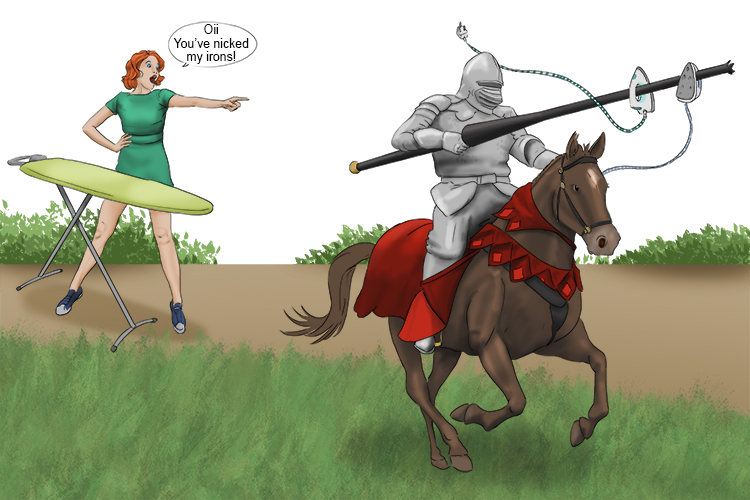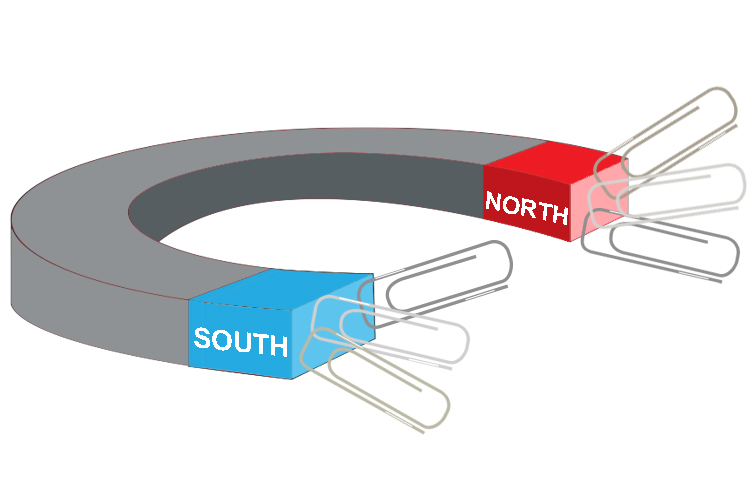Do both poles of a magnet attract a paperclip?
A magnet will attract iron, steel (steel has iron in it), cobalt and nickel. These are known as ferromagnetic metals.
Ferromagnetic means highly susceptible to magnetism (think ferociously magnetic)
Ferrous means containing iron (think 'fear us' as soldiers approach you wearing iron armour)
To remember that the magnet will attract iron, steel, cobalt and nickel, imagine a knight wearing steel (steel) armour has nicked all (Nickel) the irons (iron). The colt he was riding bolted (Cobalt).

NOTE: Steel has iron in it
A magnet will not attract brass, copper, zinc or aluminium.
Iron, steel, cobalt and nickel can become magnetic when they are in a magnetic field. This is a result of the magnetic field encouraging their electrons to align, forming north and south poles.
A paperclip is made of steel and so will be attracted to a magnet, but it also has low retainability for keeping its magnetism.

The paperclip is a magnetisable thing so when facing the south pole of a magnet the atoms of the paperclip re-align themselves and it becomes a north-south facing magnet.

When you change the pole of the magnet, the paperclip realigns its atoms; this is why paperclips can be magnetised either way around.
If the pole of the magnet is changed, the paperclip also swaps sign (from north to south, or vice versa), so the force remains attractive.
This is why both ends of a magnet can attract a paperclip . . .

. . . just as both ends of a horseshoe magnet can attract paperclips.





